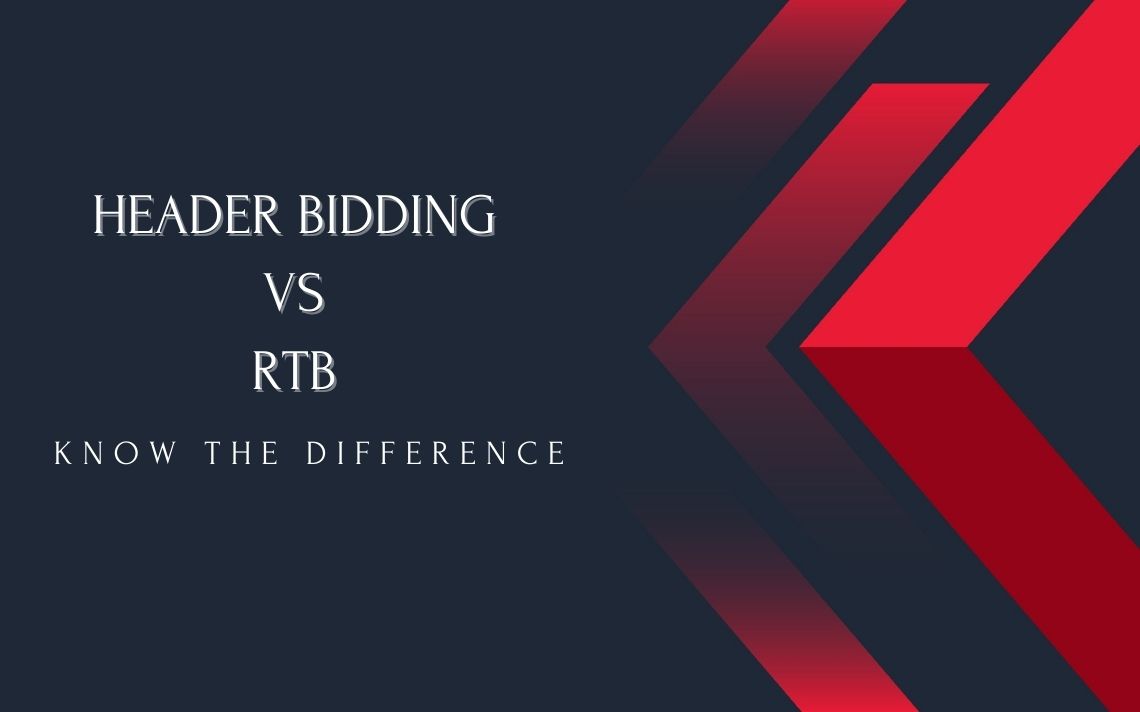
VAST 2.0 is the third iteration and second major version of the Interactive Advertising Bureau’s Video Ad Serving Template (VAST).
Table of Contents
on February 28, 2023

Header Bidding vs RTB: Header bidding has shaken up the digital advertising industry, with both advertisers and publishers hailing the method as the biggest development in ad tech yet. That’s no surprise, considering the promised advantages of header bidding: greater yields for publishers, and better competition structure for advertisers.
But another technique held the “game changer” crown not so long ago. Real-time bidding (RTB) became the staple technique of programmatic advertising when it first appeared. With automation, unprecedented options for crunching user data, and real-time operations, RTB was described as an antidote to the convoluted wheeling and dealing that had characterized most ad-buy transactions.
Split-second ad buys, data-informed decisions, automated processes — doesn’t that sound a lot like header bidding? Boiled down to their core features, header bidding and RTB can look very similar.
So why has header bidding nudged out RTB? What’s the difference?
When it comes to differentiating RTB and header bidding, there’s one trick: remember that each is a direct answer to the problems of the preceding system.
RTB works the way it does to eliminate the pitfalls of manual ad-buy transactions. Likewise, header bidding is the way it is because it’s trying to cure the weaknesses of programmatic techniques like RTB.
Before reading about the difference between Header bidding vs RTB, let’s know about a problem with real-time bidding, which refers to auctions that happen in the time before a webpage loads in the audience’s browser. RTB leverages automation to make lightning-fast bids possible — think transactions that take all of a few milliseconds.
In RTB, potential bidders receive data about the impression that’s up for grabs and the user to whom it will be served. If a bidder is interested, they participate in the auction. The winning bidder pays the publisher 1 cent more than the second-highest bid, and their ad appears on the webpage that loads for the user.
You can dig into the details of how RTB works in our glossary entry. For now, though, it’s worth highlighting what improvements came with the RTB system:
| Manual Ad Buys | RTB |
| Impressions bought in bulk | Impressions auctioned individually or in packages |
| No way to implement refined audience targeting | Advertisers can target audiences based on data like demographics, location, behavior on the web, etc. |
Insular transactions: no easy way to check if prices used are competitive or too high for the rest of the field |
The winning bidder pays 1 cent more than the second highest bidder to ensure “fairness” |
Soon enough, RTB encountered three main problems:
Header bidding, as we’ll see later, tries to address these issues. Let’s go through them one by one.
In traditional ad buying, waterfalls meant shuttling ad inventory from one potential buyer to another, a slightly less valuable one until the inventory is used up.
In RTB, publishers adapted the process by daisy-chaining ad exchange and SSP auctions instead. Essentially, publishers would run a succession of real-time auctions until all of their ad inventory was bought. (You can read more about waterfalls in our glossary entry.)
Advertisers could bid only on the “leftover” inventory that reached their rung of the waterfall. This led to the idea that RTB provided only subpar choices for advertisers.
There was little transparency to pricing, too. Impressions could technically be bought for cheaper if advertisers got lucky about which SSP/ad exchange they used on the waterfall.
Related to the above point, there wasn’t just one type of RTB. The real-time bidding system is most associated with open auctions, which take in bids from any exchanges or SSPs that want to participate. However, there are other types of programmatic transactions that tended to trump open auctions in terms of publisher priority. Some examples include preferred deals and private or exclusive auctions.
These transactions often preceded any open auctions, and participants enjoyed benefits like “first look” deals that granted them the first pick of premium ad inventory. Advertisers who wanted access to the best impressions would race to participate in these exclusive RTB auctions to get ahead of the open auction process altogether.
Google’s DoubleClick for Publishers is one of the biggest ad servers in the industry. When it started using dynamic allocation to prioritize Google’s AdX exchange in publishers’ waterfalls, other exchanges were left out in the cold. Google essentially guaranteed AdX the first bid on publishers’ ad inventories. This jeopardized the whole system, not just for advertisers who got bypassed in the access chain, but for publishers who lost out on more lucrative bids because of AdX leapfrogging the queue, as well.
Ask most industry members why header bidding is so great, and you’ll probably hear some variation of, “It levels the waterfall.” Header bidding positions itself as a direct solution to the main failings of RTB and existing programmatic systems.
Header bidding, as the name implies, uses JavaScript code in a webpage’s header to initiate a unified ad auction before any ad servers are tapped. This means two things:
A user’s browser would send important data like impression specifics and user cookies to multiple potential bidders, allowing these to weigh the value of each impression and bid accordingly. Winning bids would then be passed to the publisher’s ad server, where they would be set against existing direct deals. Whichever value won out would get its ad served.
You can learn more about header bidding in our glossary entry, but for now, let’s look at how it improves on RTB:
Header Bidding Vs RTB
| RTB | Header Bidding |
| Successive auction calls to different SSPs/ad exchanges | Unified auction with multiple SSPs/exchanges competing for every ad call |
| Access only to ad inventory that reaches the advertiser’s rung on the waterfall | Access even to premium inventory, especially if winning bid trumps direct deal values |
| Prone to manipulation by proprietary platforms (i.e., Google DFP) | Uses open-source infrastructure (e.g., Prebid.js) |
Simply put, header bidding improves upon RTB in three main areas:
Real-time bidding, or RTB, provides refined audience targeting options by using rich collections of user data. It uses automated processes to conduct real-time auctions, which publishers often arrange in a sequence called a “waterfall.” Consequently, access to premium inventory depended on advertisers’ position in the waterfall, and/or participation in RTB formats like private auctions or preferred deals that gave them higher priority over competitors.
Header bidding sends out ad calls and impression information to multiple SSPs and ad exchanges. Rather than a succession of auctions, header bidding has all interested participants compete in a single auction. Winning bids also compete with direct deals, so header bidding participants can also gain access to previously exclusive ad inventory, and publishers enjoy higher revenues from the increased competition.
Of course, header bidding has problems of its own, which you can read about in our related glossary entries. Until another system comes to address its faults, though, header bidding seems set to remain the preferred system for today’s digital advertising transactions.
Featured Posts

VAST 2.0 is the third iteration and second major version of the Interactive Advertising Bureau’s Video Ad Serving Template (VAST).

Aniview’s Marketplace announced that it has been awarded the “Certified Against Fraud Seal” from the Trustworthy Accountability Group (TAG) marking

As mobile internet speeds are normalizing at 5G speed, Aniview explains how this can influence video marketing. Read about it here

Aniview offers ways you can identify and prevent mobile fraud to ensure a successful ad campaign and better business outcomes. Learn more about it here.
Adding {{itemName}} to cart
Added {{itemName}} to cart